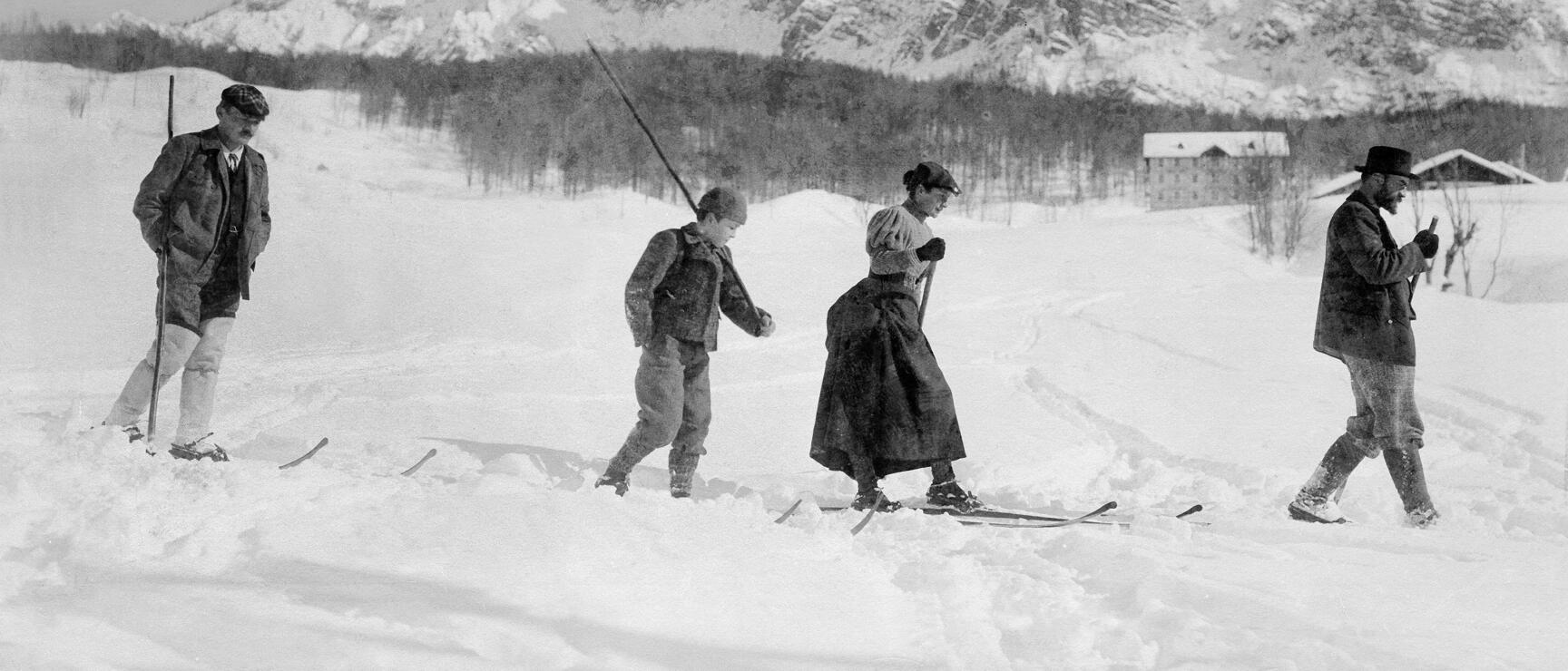
The History of Skiing in Austria
Skiing has come a long way from its humble beginnings as a cumbersome way of getting around. Today, it’s one of the most beloved winter sports that blends adventure, tradition, and passion. Austria, with its rich Alpine heritage, has been at the forefront of this transformation, shaping the world of skiing as we know it.
The Austrian School of Skiing – All Around the World
A central figure in the history of skiing is Mathias Zdarsky, an Austrian often hailed as the "father of Alpine skiing." In the early 20th century, he became the first to sail down steep mountain slopes on wooden planks, formulating the first downhill skiing technique.
Moreover, he engineered the inaugural steel binding, a precursor to today's ski bindings, which made navigating steep mountain terrains feasible. He used a long pole to change direction. It wasn't long before the first ski races were held - downhill, uphill and across flat terrain.
Several years later, Hannes Schneider and Toni Seelos further refined the sport by developing the stem turn and the parallel turn. This is when Alpine skiing really took off. Countless ski schools were founded following the very first ski school set up by Hannes Schneider in St. Anton am Arlberg in 1921. Hannes Schneider's teachings revolutionized skiing, broadening its appeal and marking the beginnings of a global movement. Hence, the Arlberg region is fittingly called the "Cradle of Alpine Skiing."
Austria quickly became the new Alpine Ski Circuit. The "Austrian Way of Skiing" spread as far as Japan and the USA, as Austrian ski instructors brought the sport across the borders. Skiing was once again revolutionized in the 1950s when a sports teacher named Stephan Kruckenhauser developed the "wedel" technique. This allows skiers to sail down the piste with short, elegant turns in which their feet are kept close together. But that's all history now: The most widespread skiing technique today is carving – turns of a large radius ridden on the edges of the skis.
Austrian Ski Instructors – A Mark of Quality
The Austrian school of skiing and its techniques are internationally respected, not least because of Austrian ski instructors. Their teachings have been a symbol of quality for decades. Their professionalism and talent for teaching skiing with humour, charm, and composure make them popular with both professional ski racers and visitors alike.
From Small Mountain Villages to Lively Winter Sports Resorts
Many international skiing superstars come from what were originally simple agricultural mountain villages. These villages have since grown and evolved alongside the sport of skiing. Over several decades, infrastructure and essential services were developed to make skiing accessible for everyone: train connectivity expanded, the first cable cars were built, followed by ski lifts and lodgings to host visitors. Local communities founded ski clubs and established skiing races, attracting more and more visitors. Slowly and steadily, the Alpine villages evolved into the popular ski destinations they are today.
Nevertheless, they have retained their original charm and – what is known even in English – their Gemütlichkeit: the pleasure of relaxing with friends, enjoying oneself in a warm and welcoming atmosphere, and appreciating the finer things in life.